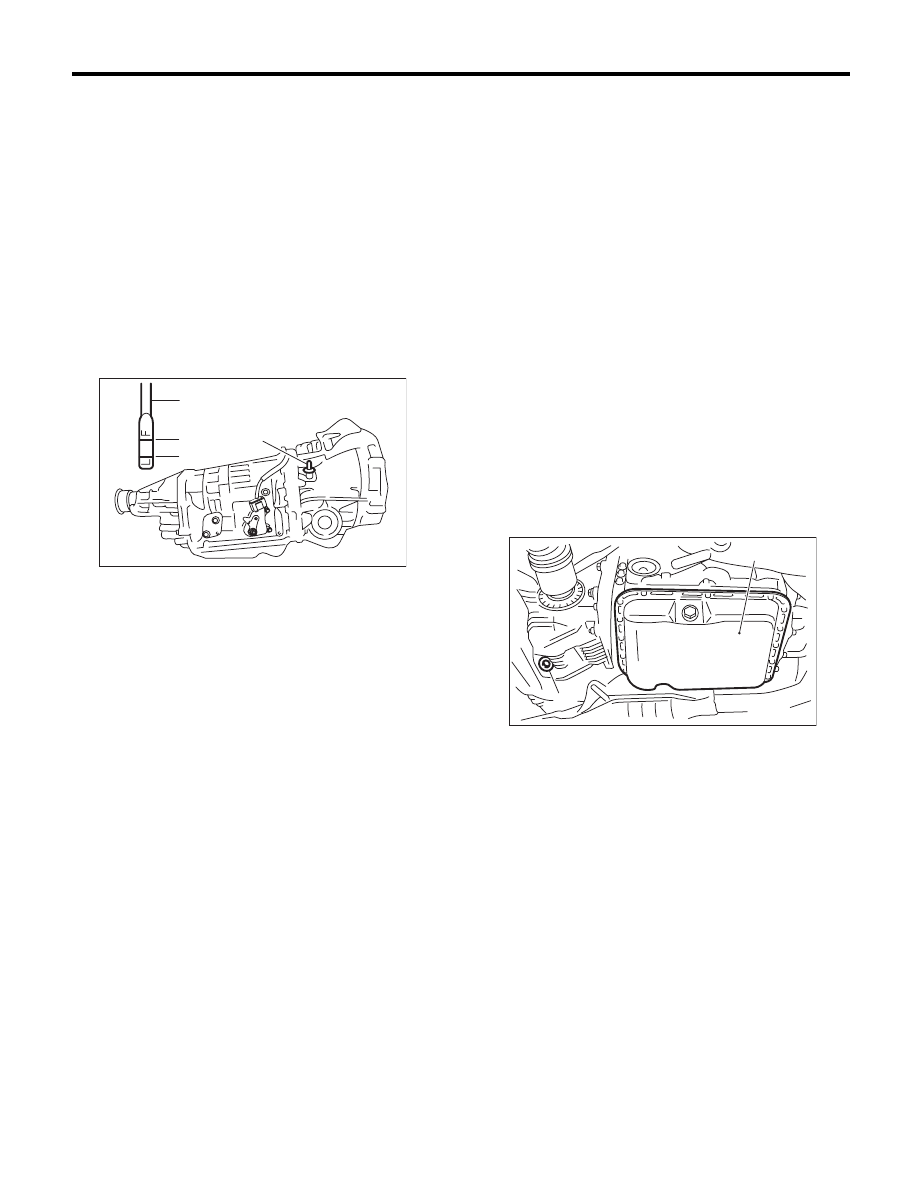Subaru Legacy IV (2008 year). Manual - part 670

4AT-28
Differential Gear Oil
AUTOMATIC TRANSMISSION
3. Differential Gear Oil
A: INSPECTION
1) Park the vehicle on a level surface.
2) Remove the oil level gauge and wipe it clean.
3) Reinsert the level gauge all the way. Make sure
the level gauge is inserted correctly and in the
proper orientation.
4) Remove the oil level gauge again, and check the
level of differential gear oil. If the differential gear oil
level is below “L” line, add oil to bring the level up to
“F” line.
NOTE:
To prevent overfilling the differential gear oil, do not
fill oil to the “F” line or more.
B: REPLACEMENT
1) Lift up the vehicle.
2) Remove the differential gear oil drain plug using
TORX
®
bit T70, and drain the differential gear oil
completely.
CAUTION:
• Immediately after the vehicle has been run-
ning or after idling for a long time, the differen-
tial gear oil will be hot. Be careful not to burn
yourself.
• Be careful not to spill the differential gear oil
on exhaust pipe to prevent it from emitting
smoke or causing fires. If differential gear oil is
spilled on the exhaust pipe, wipe it off com-
pletely.
3) Replace the gasket with a new part and tighten
the differential gear oil drain plug using the TORX
®
bit T70.
Tightening torque:
Aluminum gasket
44 N·m (4.5 kgf-m, 32.5 ft-lb)
Copper gasket
70 N·m (7.1 kgf-m, 51.6 ft-lb)
4) Lower the vehicle.
5) Fill the differential with differential gear oil from
the level gauge hole.
Recommended gear oil:
<Ref. to 4AT-3, RECOMMENDED GEAR OIL,
SPECIFICATION, General Description.>
Gear oil capacity:
1.1 — 1.3
2
(1.2 — 1.4 US qt, 1.0 — 1.1 Imp qt)
6) Check the level of differential gear oil. <Ref. to
4AT-28, INSPECTION, Differential Gear Oil.>
(A) Oil level gauge
(B) Upper level
(C) Lower level
AT-04863
(B)
(C)
(A)
(A)
(A) Oil pan
(B) Differential gear oil drain plug
AT-04830
(A)
(B)